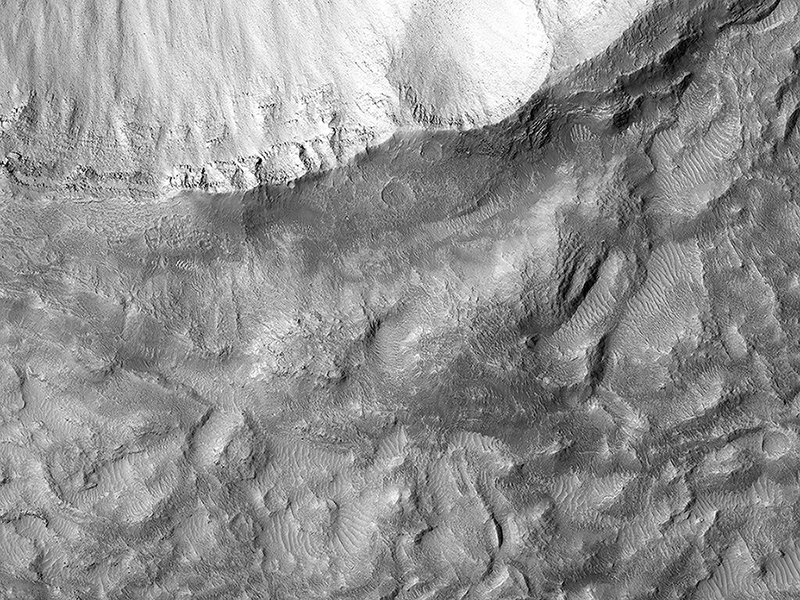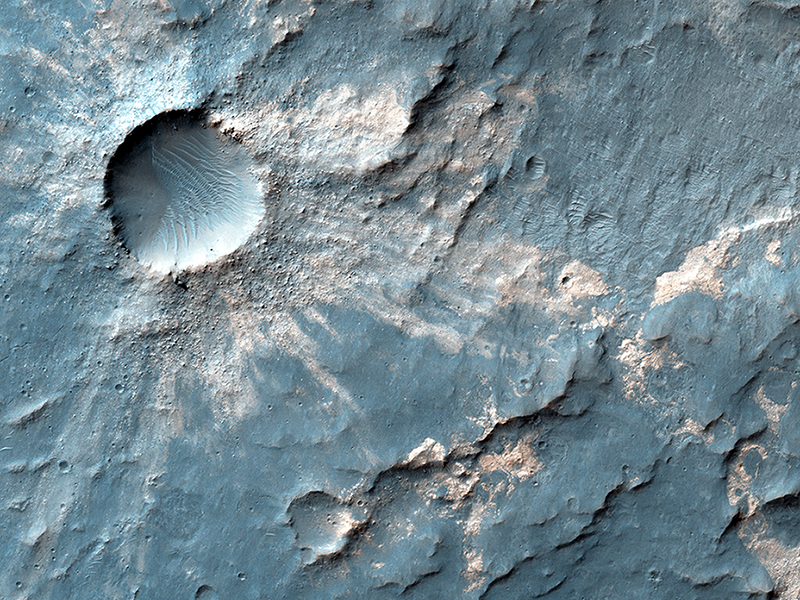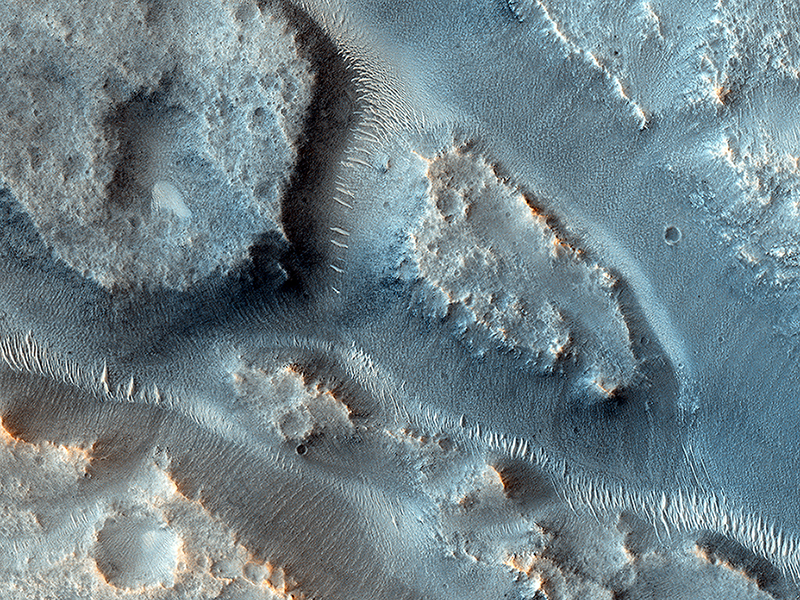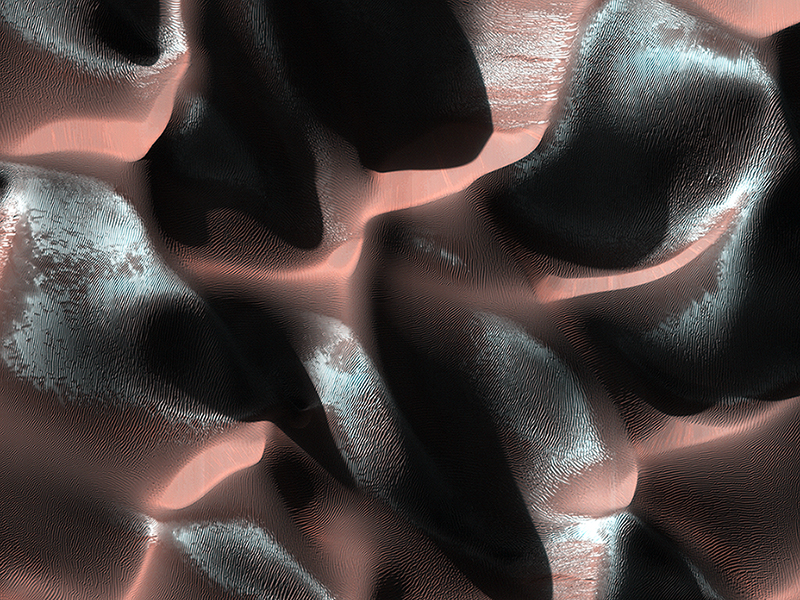Mike Mellon wrote:Ejecta in Excess (ESP_034941_2130) (HiClip)
When impact craters are formed, the material that once resided in the subsurface is blown upward and outward. This material falls back and settles around the newly formed crater into what is called an “ejecta blanket.” It often appears as a layer on top of the original surface extending radially outward from the crater.
In some cases the volume of the ejecta material—mainly rocky debris—appears to exceed the volume of the original crater, presenting something of a puzzle. One hypothesis is that the original surface may have been inflated with an ice-rich layer at the time of the impact. After the impact, the newly formed blanket of ejecta then protected this ice from evaporation loss, while the rest of the surrounding terrain was unprotected and deflated as ice was lost due to more recent climate changes.
Examining these craters up close with HiRISE may reveal clues to the presence of buried ice deposits today beneath the ejecta, and about the subsurface stratigraphy exposed along the crater walls.
HiRISE Science Team wrote:Craters within Craters (ESP_034942_1615) (HiClip)
Sandwiched between a crater nearly 4 kilometer across and a much larger and older crater over 15-kilometers in diameter is this small impact crater with light-toned material exposed in its ejecta.
Because the material is still brighter than the surrounding surface, darker dust settling out of the atmosphere has not had time to cover it up, so the crater is fairly recent. Of course, “recent” could mean on the order of thousands of years or older. This small crater is also fairly shallow and smooth in its interior.
This light toned rock deposit is also visible along neighboring scarps and even in the rock strata exposed along the rim of the larger 15-kilometer crater, indicating that the formation of this rocky strata predates all of these craters. The brightness and color of these deposits are the result of different minerals within the rock relative to the nearby darker rocks and soils, and perhaps indicate extensive chemical interaction between water and the native rocks.
Mike Mellon wrote:A Complex Valley Network Near Idaeus Fossae (ESP_034948_2165) (HiClip)
Many valleys occur all over Mars that reveal an extensive ancient history of liquid water erosion. While these valley systems are typically now covered with fine soils and sand dunes, the overall scale and shape of the valleys reveals much about the ancient climate.
The speed, volume, and extent of the flowing water can be apparent from how it interacts with obstacles. For example, large volumes of rapidly flowing water may overtop obstacles rather than be diverted around them. Or, a small stream flowing for an extend period may gradually cut downward through hard rock obstacles.
In this case, the valleys cut through a small, kilometer size impact crater. As it did so, the flow appears to have divided it into as many as three streams and then coalesced as it exited the other side.
Alfred McEwen wrote:Dramatic Dune Destination (ESP_035143_1325) (HiClip)
This image of a sand dune field in a Southern highlands crater was acquired when the Sun was just 5 degrees above the horizon. As a result, the image is mostly shadows, with sharply-delineated dune crests sticking up into the sunlight.
The especially bright patches—bluish in enhanced color—are due to seasonal frost that is accumulating as this hemisphere approaches winter.
Credit: NASA/JPL/University of Arizona
<< Previous HiRISE Update



